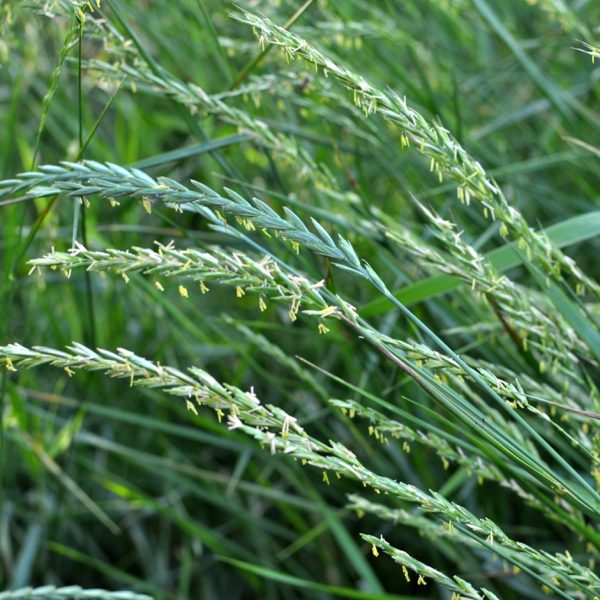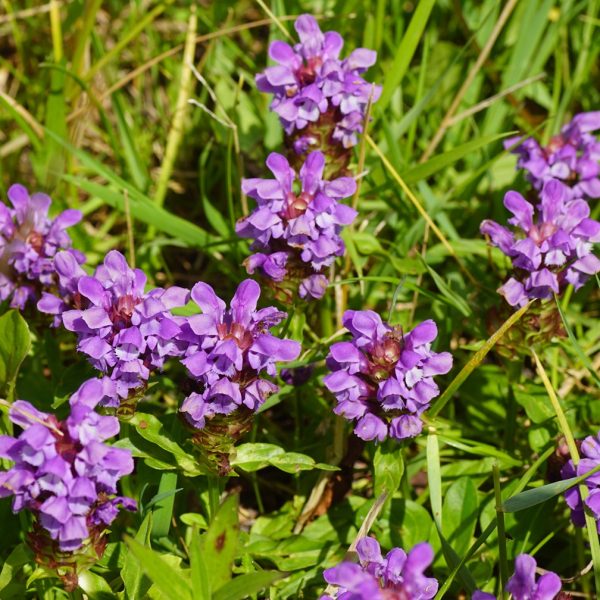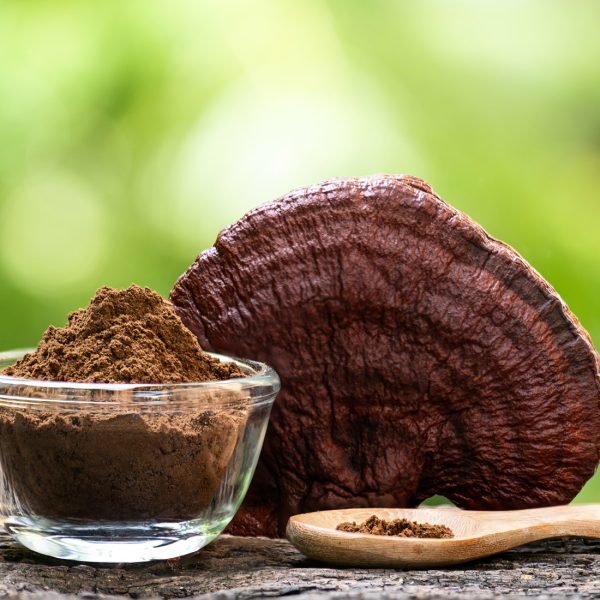Hayfever (or seasonal allergic rhinitis) is an allergic reaction of the nasal passages and airways to wind borne pollens.
Understanding hayfever

Hayfever (seasonal allergic rhinitis) occurs mostly between late March and September, when high concentrations of pollen are released into the environment. If hayfever develops in spring, it is usually caused by tree pollens. If it develops in summer, grass and weed pollens are usually responsible (1).
Perennial allergic rhinitis occurs when symptoms are present all year round, and can be triggered by other common allergens such as dust mites, pets, mould, or even sensitive foods. The condition shares many features with asthma, as the mechanisms responsible for both the development and treatment are similar.
Symptoms, include watery nasal discharge, sneezing, and itchy eyes. Hayfever sufferers may feel worse during warm, humid and windy weather. Natural changes in temperature during the morning or evening may also make symptoms worse. Hayfever can affect both adults and children.
How does hayfever work?
An allergy is an unnecessary immune response to a harmless substance, in this case, grass, tree and weed pollen (3). Exposure to these allergens triggers a hyper-reactive response which causes the body to release histamine and allergic antibodies known as immunoglobulins, in an attempt to neutralise the perceived invader.
Some people have an inherited tendency towards allergies, a condition known as atopy. Atopic individuals are more prone to asthma, eczema and hay fever (the atopic triad) (12).
When exposed to pollen, mast cells (specialised white blood cells found in a variety of body tissues) release chemicals that control or produce inflammation. These inflammatory mediators are responsible for many of the allergic responses seen in hayfever.
Once the mast cells have been exposed to the allergen, they then become “sensitised” meaning that each time the perceived invader is encountered, an allergic reaction is triggered.
Understanding the root

There are a number of factors that may pre-dispose people to develop hayfever. Usually, one or more of these factors combine to initiate or exacerbate symptoms. Herbalists offer a personalised approach to each individual case. Tailored advice takes into account a person’s lifestyle, environment and genetic factors to create a suitable, effective treatment plan.
Allergic rhinitis is common and affects 10–15% of children and 26% of adults in the UK. (11) Unfortunately, this number is continuing to rise. (3) One of the reasons is thought to be linked to changes in our modern lifestyle that have altered our exposure to the diversity of microbes we come into contact with.
The Hygiene Hypothesis describes how children in families with older siblings are less likely to develop allergies due to an increased incidence of infections in early childhood, transmitted from older siblings (4). This theory has developed into what is now known as the ‘Old Friends Mechanism,’ which explains how exposure to a wide range of microbes in early life may help with the development of a properly regulated immune system, which is less likely to overreact to harmless allergens.
Less breastfeeding, smaller families, increased antibiotic use, and chemicals used in food production, all have an impact on the diversity of the gut microbiome, which makes up a large portion of our immune system (13).
Both leaky gut syndrome and an overgrowth of the common yeast Candida albicans have also been implicated in the development of allergic conditions such as hayfever (1).
Leaky gut syndrome is where the gut lining has been compromised, allowing large molecules of food that have not been properly absorbed to find their way into the body. This creates an increased level of allergic compounds in the circulatory system, which in turn increases the likelihood of an allergic response (1).
Signs and symptoms
Hayfever can have a significant impact on a person’s life.
Anxiety is common among hayfever sufferers. Up to 56 % fear others may think their symptoms are related to covid 19 (5). Others avoid going outside due to worry about exposing themselves to allergens. Due to the irritation caused to the nasal passages and throat, sufferers often endure poor quality sleep, compounding the feelings of tiredness and lethargy caused by their symptoms during the daytime.
Common symptoms include:
- Sneezing and coughing
- A runny or blocked nose
- Itchy, red or watery eyes (allergic conjunctivitis)
- Itchy throat, mouth, nose and ears
- Loss of smell
- Pain around the temples and forehead
- Headache
- Earache
- Feeling tired
- The sensation of mucus running down the back of the throat (post-nasal drip)
Herbal solutions
Herbs are not usually prescribed as a single remedy, but as part of a prescription tailored to the individual needs of each patient. The following list represents a small variety of remedies (from the vast number of options available) which may be considered useful as part of a formula. When formulating a prescription, herbalists always try to match the energy (qualities of the plant such as warming, drying etc) to the nature of both the symptoms, and the patient’s constitution.

Anti-histamine / anti-inflammatory herbs
In studies, extracts of nettle (Urtica dioica) were shown to inhibit the inflammatory action of mast cells, preventing the release of the chemicals that cause the symptoms of hayfever (6).
Eyebright (Euphrasia officinalis) has long been used as a traditional remedy for supporting the mucous membranes. It is useful in cases of acute or chronic inflammation, particularly where the eyes are involved.
Marshmallow (Althaea officinalis) helps soothe irritation and calm inflammation of the affected tissue.
The following herbs also help tone mucous membranes and de-sensitise them to allergens.
- Goldenrod
- Elderflower
- Echinacea
For gut dysbiosis
Licorice (Glycyrrhiza glabra) has a long history of use as an anti-inflammatory and anti-allergy agent.
Garlic (Allium sativum) contains pre-biotic (a substance which promotes the growth of beneficial gut micro-organisms) and anti-bacterial compounds. It may therefore be useful for people whose hayfever symptoms are linked to candida overgrowth or leaky gut syndrome.
Liver supportive herbs to help remove the offending allergen from the system
Dandelion (Taraxacum officinale) stimulates the mucous membranes and absorbs toxins from the bowel, helping beneficial flora to thrive, and inhibiting the growth of unhealthy bacteria (10). Gut bacteria play a crucial role in immune response and play an impactful role in the allergic response. Dandelion also helps the very important liver detoxification required to minimise systemic allergic responses (8).
A note of caution: In some sensitive individuals, allergic rhinitis can be caused by pollen from common herbs which also flower in the summer (7). This includes herbs like chamomile, plantain and nettle, which should therefore be avoided by people with known sensitivities.
Hayfever herbs
If you are unable to visit a herbalist who can create a tailored individual prescription, there are some “over the counter” herbs that may help allay some of the common symptoms associated with hayfever:
Ginger (Zinger officinale) has a pungent, warming and moving action, which helps to “melt” phlegm, thereby reducing the symptoms of a blocked nose. As a peripheral circulatory stimulant, it may also be helpful in cases of headache and painful sinuses, particularly where the lining of the mucous membrane is inflamed. It can be added to food, or is pleasant taken as a hot tea with slices of lemon or citrus peel.
Marshmallow root syrup (Althea officinalis) helps to stop the bark of an unproductive cough. It calms inflamed and irritated mucous membranes, and is particularly helpful if coughing is keeping the person awake at night (15).
Lemon balm (Melissa officinalis) helps to reduce feelings of anxiety (16). Taken as a tea, it is particularly soothing to children with its pleasant aroma and palatable flavour profile. A small dab of essential oil on a handkerchief or favourite toy not only helps to calm and soothe, but can also open up the airways and relieve inflammation.
Holistic solutions
- Reduce the allergic threshold by reducing your exposure to the allergen
- Install an air purifier in your home and avoid using air fresheners and aerosols which contain nasal irritants
- On high pollen days, shower and wash your hair after arriving home and change your clothing.
- Apply an effective allergen barrier balm around the edge of each nostril to trap or block pollens and other allergens.
- Follow a detoxification, anti-candida, or gut rebalancing programme before and during hayfever season
- Take vitamin C. In studies, vitamin C has been shown to be a beneficial anti-oxidant and anti-inflammatory agent that is helpful in reducing the severity of hayfever symptoms (14).
- Steam baths can be useful to clear the airways, especially with essential oils like eucalyptus
- Applying a balm to the nostrils can help to trap any incoming pollen preventing the allergic response
References
- Murray M, Pizzorno J. The Encyclopaedia of Natural Medicine. Revised 2nd Ed. Little, Brown & Co; 2000.
- C. Gopalakrishman et al. “Effect of tylophorine, a major alkaloid of tylophora indica on immune-pathological and inflammatory reactions. Indian Journal of Medical research 71 (1980): 940-8.
- Allergies. British Society of Immunology. https://www.immunology.org/ Accessed Jan 2022.
- Strachan 1989. British Medical Journal. 299 (6710) 1259- 60.
- Allergy UK. https://www.allergyuk.org/types-of-allergies/hayfever/ Published Jan 2022. Accessed Jan 2022.
- Roschek B Jr, Fink RC, McMichael M, Alberte RS. Nettle extract (Urtica dioica) affects key receptors and enzymes associated with allergic rhinitis. Phytother Res. 2009 Jul;23(7):920-6. doi: 10.1002/ptr.2763. PMID: 19140159.
- Forkel S, Beutner C, Heetfeld A, Fuchs T, Schön MP, Geier J, Buhl T. Allergic Rhinitis to Weed Pollen in Germany: Dominance by Plantain, Rising Prevalence, and Polysensitization Rates over 20 Years. Int Arch Allergy Immunol. 2020;181(2):128-135. doi: 10.1159/000504297. Epub 2019 Dec 5. PMID: 31805564.
- 12. Cai L, Wan D, Yi F, Luan L. Purification, Preliminary Characterization and Hepatoprotective Effects of Polysaccharides from Dandelion Root. Molecules. 2017;22(9):1409. doi:10.3390/molecules22091409
- Chen K, Xie K, Liu Z, Nakasone Y, Sakao K, Hossain A, Hou DX. Preventive Effects and Mechanisms of Garlic on Dyslipidemia and Gut Microbiome Dysbiosis. Nutrients. 2019 May 29;11(6):1225. doi: 10.3390/nu11061225. PMID: 31146458; PMCID: PMC6627858.
- Shipard. I. How can I use herbs in my daily life? 7th Edition. David Stewart. 2016.
- Scadding GK, Kariyawasam HH, Scadding G, Mirakian R, Buckley RJ, Dixon T, Durham SR, Farooque S, Jones N, Leech S, Nasser SM, Powell R, Roberts G, Rotiroti G, Simpson A, Smith H, Clark AT. BSACI guideline for the diagnosis and management of allergic and non-allergic rhinitis (Revised Edition 2017; First edition 2007). Clin Exp Allergy. 2017 Jul;47(7):856-889. doi: 10.1111/cea.12953. PMID: 30239057.
- Thomsen SF. Epidemiology and natural history of atopic diseases. Eur Clin Respir J. 2015;2:10.3402/ecrj.v2.24642. Published 2015 Mar 24. doi:10.3402/ecrj.v2.24642
- Langdon A, Crook N, Dantas G. The effects of antibiotics on the microbiome throughout development and alternative approaches for therapeutic modulation. Genome Med. 2016;8(1):39. Published 2016 Apr 13. doi:10.1186/s13073-016-0294-z
- Bucca C, Rolla G, Oliva A, Farina JC. Effect of vitamin C on histamine bronchial responsiveness of patients with allergic rhinitis. Ann Allergy. 1990 Oct;65(4):311-4. PMID: 2221490.































